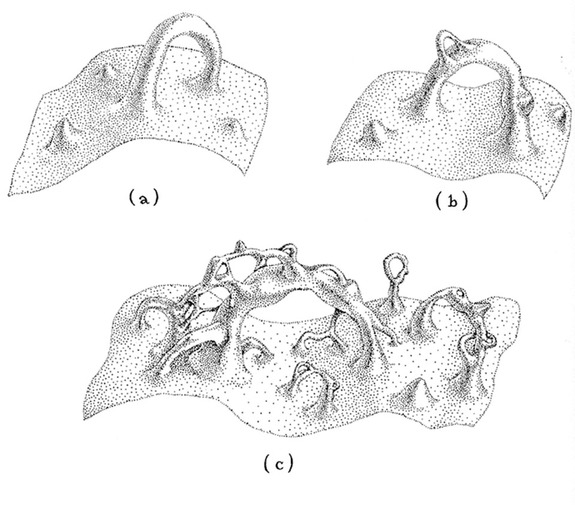Gluons are the massless mediators of color charges between quarks and a type of gauge boson (a set of force carrying particle) with the spin of 1. Gluons itself is both an anti-color and a color, this explains how gluons can change the color of other quarks. Take for example a green quark. If it were to turn into a red quark what would need to happen? Well a gluon with anti-green and red color would be needed. The green annihilates with the anti-green, just like anti-particles an normal particles would as established in my second article, and thus you are left with a red quark. Gluons also have the unique property of being able to split into pairs of gluon and/or do the same but with antimatter and matter particles.

* not that in both these interactions the gluons change the color of both particles in the end.
The spring looking design on the Feynman diagram is a gluon (keep in mind the flat line above a symbol mean anti). Scientists theorize of a gluon field describes the motion of these gluons between quarks, including when they form anti-matter and matter pairs.
^flux tube
This field that causes the attraction between quarks is the result of flux tubes where gluons move from quark to quark. These are the field lines that attract quarks, just like normal charges have electric field lines that cause them to attract one another. This resulting force of attraction between quarks is known as the strong force.
Because gluons have a color charge, they can attract one another by exchanging other gluons. This causes the flux tubes to bundle together between quarks. Essentially when gluons are emitted and absorbed between only two quarks, the field lines causing the attraction between the two quarks are linear rather than curved like that of its electromagnetic counterpart.

The image on the left is the strong force while the right is electromagnetic force.
The image bellow is the picture of meson which interestingly contains two elementary particles one being of a certain color and the other being it's respective anti-color (red, anti-red). Remember the only difference is that mesons cannot have two differing color combinations like (green, anti-blue) because then the net color charge wouldn't be white, but gluons can do this.

Keep in mind that the strength of the strong force between two quarks only operates at small distances because the strength of the strong force from the gluons is so high. As a result, if you put enough energy pulling the quarks apart, a pair of anti-matter and matter will form resulting in two or more mesons being produced. In the picture above, a meson splits into 2 new mesons after energy is applied to it.







